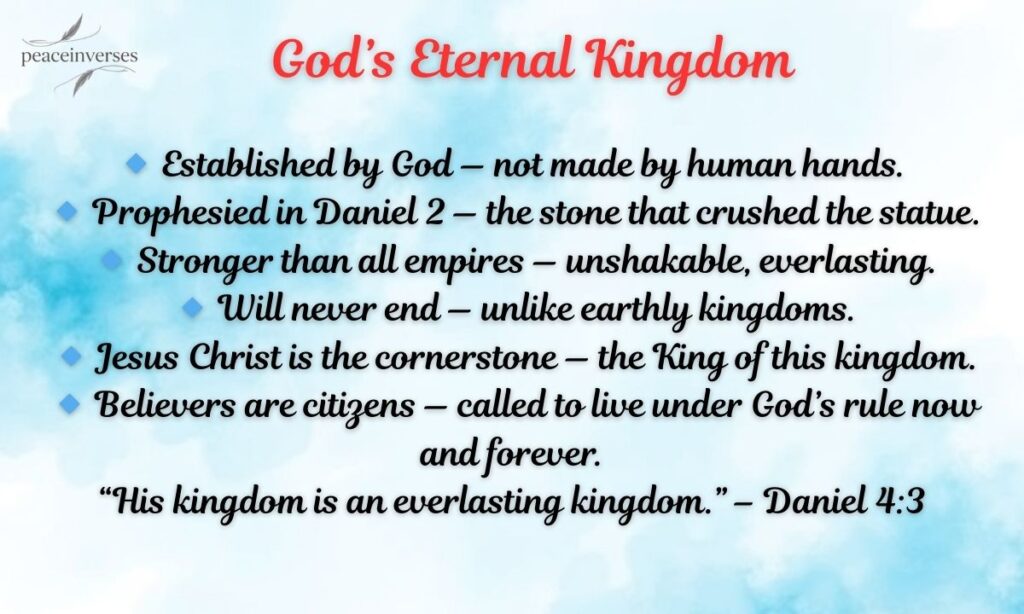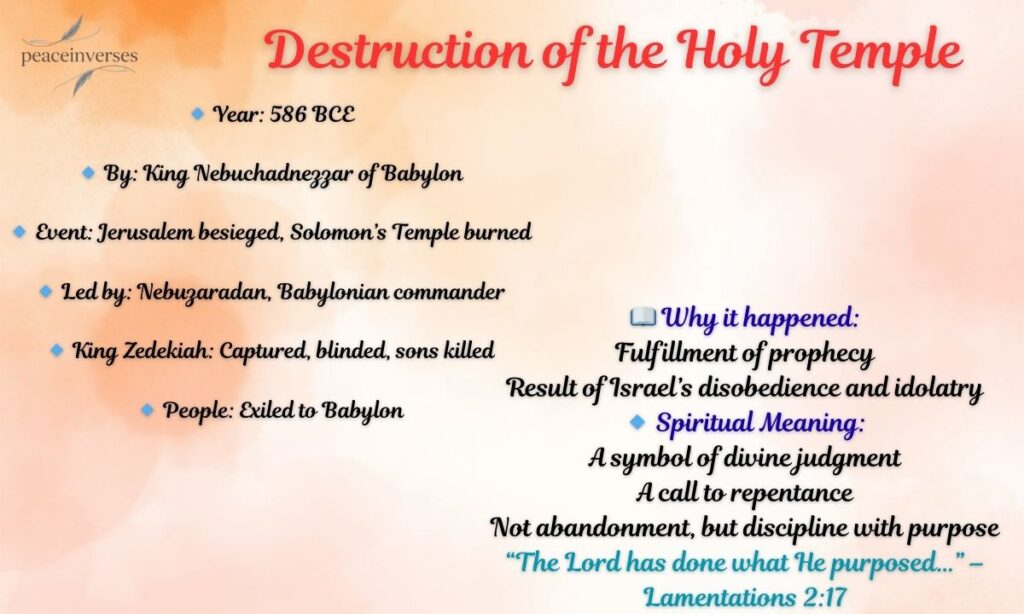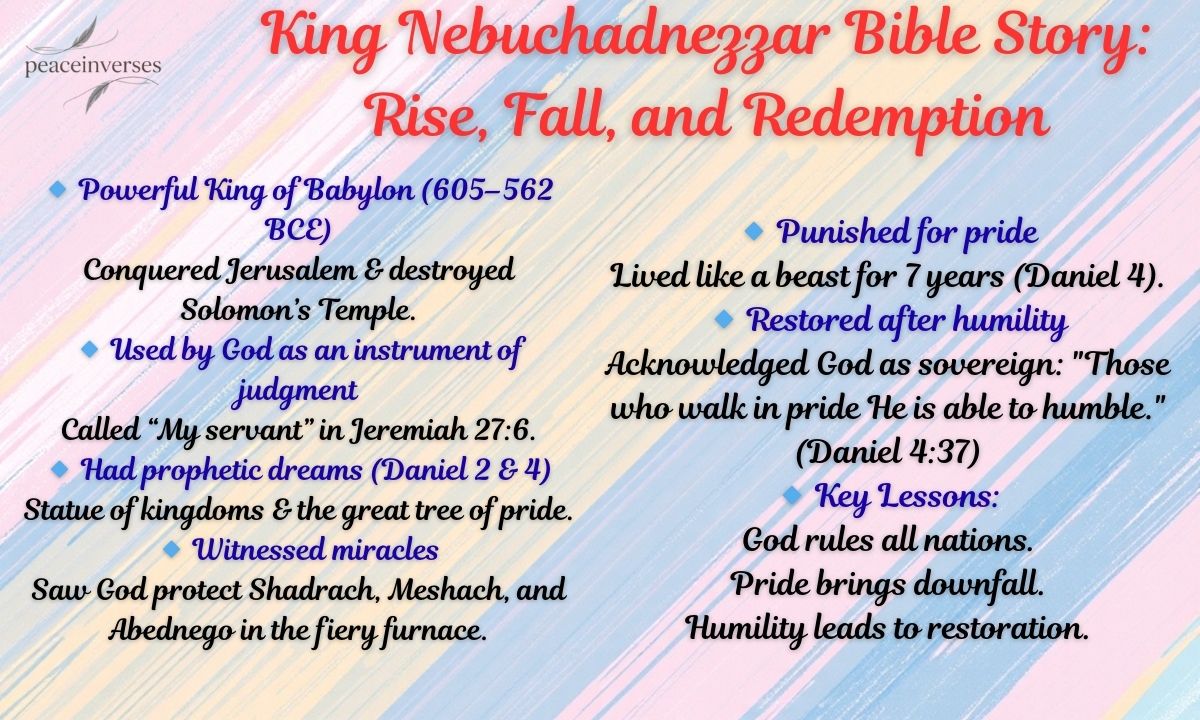Few stories in Scripture capture both power and humility like that of King Nebuchadnezzar II. He rose as the feared ruler of Babylon, conquering nations and building one of history’s greatest empires. Yet his pride led to a dramatic fall that still speaks to us today.
In the Bible’s account, from Daniel to Jeremiah, Nebuchadnezzar’s journey moves from triumph to madness and finally to redemption. His story isn’t just ancient history—it’s a reminder that no matter how high we climb, God’s sovereignty rules over all.
Who Was King Nebuchadnezzar?
King Nebuchadnezzar II ruled Babylon from 605–562 BCE and is remembered as one of history’s most powerful monarchs. He conquered Jerusalem, destroyed the First Temple, and forced the Jewish people into exile. His ambition and pride often made him see himself as divine, claiming power beyond human limits.
Yet, the Bible shows a different side of his reign. Through Daniel and the prophets, Nebuchadnezzar encountered the living God. These moments revealed that his power was only temporary and that God’s sovereignty stood above him. His story highlights the tension between human pride and divine authority.
Nebuchadnezzar’s Rise to Power
Nebuchadnezzar was the son of Nabopolassar, the founder of the Neo-Babylonian Empire. Before becoming king, he proved himself as a strong military commander. His victory at the Battle of Carchemish over Egypt secured Babylon’s dominance in the region.
From there, his empire stretched across Syria, Israel, and beyond, making him one of the most feared rulers of his age. Ancient texts describe his reign as so strict and intimidating that even laughter in his presence was silenced. His rise wasn’t only political but symbolic of God’s use of kings to shape history.
A Fearsome Conqueror
Nebuchadnezzar’s campaigns were marked by brutality and power. The prophet Jeremiah (27:6) even described him as God’s “servant,” a tool of judgment over nations. His reputation was so great that some sources depict him riding a lion with a snake as reins, an image of unmatched control and terror.
His own generals feared his presence, and stories about his power spread far beyond Babylon. These descriptions show him as more than a ruler—he was a figure of awe, fear, and divine purpose. For many, his reign embodied the height of human strength but also the danger of unchecked pride.
Conquest of Jerusalem
In 605 BCE, King Nebuchadnezzar laid siege to Jerusalem, beginning a series of conquests that reshaped Israel’s future. King Jehoiakim submitted, but rebellion followed, leading to harsh consequences. Later kings like Jehoiachin and Zedekiah also fell under Babylon’s power.
During this time, many of Judah’s elite were exiled to Babylon. Among them was Daniel and his companions, who became key witnesses of God’s faithfulness in a foreign land. What looked like defeat was actually part of God’s fulfilled prophecy, showing His sovereignty over history.
Key points from the conquest:
- 605 BCE: First siege, Jehoiakim made vassal.
- 597 BCE: Jehoiachin exiled, treasures taken from the Temple.
- 586 BCE: Jerusalem and the Temple destroyed under Zedekiah.
- Faithful exiles like Daniel carried their testimony into Babylon.
The Dream of the Statue
One of Nebuchadnezzar’s most famous moments came in Daniel 2, when he dreamed of a colossal statue. Made of gold, silver, bronze, iron, and clay, it deeply troubled him. None of Babylon’s wise men could explain its meaning until Daniel stepped forward.
Daniel revealed the statue as a prophecy of future empires. Each metal represented a kingdom, beginning with Babylon and ending with Rome. This vision showed that human power rises and falls, but no empire lasts forever. It set the stage for God’s greater plan.
God’s Eternal Kingdom

The climax of the dream was the arrival of a stone not cut by human hands. It struck the statue and shattered it completely. Unlike earthly kingdoms, this stone represented God’s kingdom—eternal, unshakable, and sovereign over all human authority.
For Nebuchadnezzar, it was a startling reminder that his empire, though great, was temporary. For believers, it became a timeless promise of God’s rule. The dream reminds us that while human power may appear unstoppable, God’s kingdom endures forever.
The Fiery Furnace
In Daniel 3, Nebuchadnezzar built a massive golden idol and commanded all people to bow before it. Refusal meant certain death in a blazing furnace. Yet three Jewish men—Shadrach, Meshach, and Abednego—stood firm in their faith.
They refused to worship the idol, declaring that their loyalty was to God alone. Angered, the king ordered the furnace heated seven times hotter. Even the soldiers who threw them in died from the flames’ intensity.
But inside the fire, the men were untouched. Nebuchadnezzar saw a fourth figure with them, described as “like a son of the gods.” Their miraculous survival left the king in awe.
Key lessons from the furnace:
- Faith requires courage under threat.
- God’s presence protects in trials.
- Even kings are forced to acknowledge His power.
The Dream of the Great Tree
Later, Nebuchadnezzar had another troubling vision. He saw a towering tree that fed and sheltered every living thing. Suddenly, a heavenly messenger commanded it to be cut down, leaving only the stump.
Confused, the king turned again to Daniel for interpretation. Daniel explained the tree symbolized Nebuchadnezzar himself—great in power but vulnerable to divine judgment. His pride would lead to his downfall.
Despite Daniel’s warning to repent, the king’s arrogance continued. Soon after, the prophecy was fulfilled. Nebuchadnezzar lost his sanity and lived like a beast for seven years, eating grass and wandering in the fields.
The Cost of Pride
The dream of the tree carried a clear message: pride leads to destruction. Nebuchadnezzar’s downfall was not caused by enemies but by his own heart. His insistence on self-exaltation put him in direct opposition to God.
For seven years, he lived without power, honor, or dignity, until he finally lifted his eyes to heaven. Only then did God restore him. This dramatic turn showed that humility brings restoration, but pride invites discipline.
The king’s story warns every generation: no matter how high we rise, God alone deserves glory. His sovereignty cannot be challenged by human pride.
Nebuchadnezzar’s Madness and Restoration
In Daniel 4:34–37, Nebuchadnezzar’s pride led to a dramatic judgment. For seven years, he lived like an animal—eating grass, his hair growing long, and his nails like claws. His once-great throne was abandoned, and his empire ruled without him.
This madness was more than illness; it was a sign of God’s discipline against arrogance. The king’s strength, wealth, and fame could not save him when he exalted himself above heaven. Only humility could restore him.
Finally, Nebuchadnezzar lifted his eyes to heaven. In acknowledging God’s rule, his sanity and kingdom were returned. His words of praise marked a transformed heart and a recognition of divine sovereignty over human pride.
Key lessons from his restoration:
- Pride brings loss; humility brings renewal.
- God’s grace is available, even to kings.
- True power belongs to God alone.
Destruction of the Holy Temple

In 586 BCE, Jerusalem faced its darkest hour. Under Nebuchadnezzar’s orders, his commander Nebuzaradan besieged the city, burned the Temple, and tore down its walls. The sacred space built by Solomon was reduced to ruins.
The horrors were devastating. King Zedekiah witnessed his sons executed before his eyes, then was blinded and taken to Babylon in chains. Families were torn apart, and the Jewish people were forced into exile.
This destruction fulfilled the warnings of the prophets. Generations of disobedience had led to divine judgment, and now the heart of Israel’s worship was gone. The Temple’s loss symbolized the depth of God’s discipline.
Divine Judgment and Exile
The Bible calls Nebuchadnezzar “My servant” (Jeremiah 25:9), showing that even a pagan king could be used as God’s instrument of justice. His military campaigns were not random—they were part of God’s plan to correct His people.
Talmudic insights add depth, teaching that God chose to send Israel into exile under a great and powerful nation. This ensured the punishment carried weight, and the exiles could remain visible witnesses to God’s covenant.
For Israel, exile was both a humiliation and a refining process. Though the land was lost, the presence of faithful exiles like Daniel, Ezekiel, and others carried God’s truth into Babylon. The story reveals that divine judgment always works alongside divine purpose.
Nebuchadnezzar’s Immorality and Idolatry
Despite his moments of awe toward the God of Israel, Nebuchadnezzar often fell back into immorality and idolatry. He engaged in sun worship, raised idols, and demanded submission to false gods. His pride blinded him to true worship.
Sources describe his cruelty toward captive kings, including sadistic assaults meant to humiliate them. These acts reflected a ruler who acknowledged God’s existence but saw Him as distant and uninvolved.
His life reveals how a flawed understanding of God leads to distorted morality. Acknowledging God is not enough—submission and obedience are required for real transformation.
His Death and Legacy
Nebuchadnezzar died in 562 BCE, ending one of the most powerful reigns of the ancient world. He was succeeded by Evil-Merodach, and later Belshazzar, who both failed to maintain the same strength of leadership.
Prophets gave a dark view of his end. Isaiah 14:19 speaks of his corpse being cast aside without honor, a symbol of the fall of arrogant rulers. His earthly power could not preserve dignity in death.
Yet, his role as God’s “servant” ensured that Judah’s exile was not abandonment but purposeful discipline. Talmudic teachings highlight this truth, showing that God worked even through Babylon’s cruelty.
Key Lessons from Nebuchadnezzar’s Story
Nebuchadnezzar’s story is not just ancient history—it carries timeless truths. His rise, fall, and restoration mirror struggles every generation faces with pride, power, and faith.
Five lessons stand out clearly:
- God’s sovereignty rules over all kings and nations.
- Pride leads to inevitable downfall.
- Humility opens the door to restoration.
- Worship belongs to God alone, never idols.
- Faith shines brightest in trials, like in the fiery furnace.
These lessons still resonate for readers today, reminding us to resist building our own “empires” of pride.
Practical Steps for Humility
Nebuchadnezzar’s journey shows that humility is learned through discipline and grace. Believers today can grow in humility by walking closely with God.
Practical steps include:
- Immersing in God’s Word for guidance (Psalm 127:1).
- Relying on the Holy Spirit rather than human strength (Zechariah 4:6).
- Following examples like Ezra and Nehemiah, who sparked revival through Scripture and prayer.
Humility isn’t weakness—it is dependence on God. True strength comes from surrender, not self-exaltation.
Key Bible Verses
The story of Nebuchadnezzar is anchored in powerful verses that reveal God’s sovereignty and human responsibility. These passages show how God rules history, tests faith, and humbles the proud. They remain timeless truths for every believer.
One pivotal text is Daniel 2:20–21, which declares that God changes times, seasons, and removes kings. This verse reminds us that earthly rulers rise and fall only by His command, proving His absolute control over kingdoms.
Another central verse is Daniel 3:17–18, spoken by Shadrach, Meshach, and Abednego. Their faith stood firm, declaring that even if God did not rescue them from the furnace, they would not bow to idols. This shows faith that is unshaken by outcomes.
A third key passage is Daniel 4:37, where Nebuchadnezzar himself praises God after his restoration. He acknowledges that the Lord humbles the proud and exalts the humble. This verse captures the core lesson of the king’s entire journey.
Key Takeaways from These Verses:
- God’s sovereignty rules over all nations and rulers (Daniel 2:20–21).
- True faith stands firm, even in suffering (Daniel 3:17–18).
- Pride leads to downfall, while humility brings restoration (Daniel 4:37).
These verses form the backbone of the narrative, offering spiritual insights that continue to guide hearts today.
Conclusion
Nebuchadnezzar’s story is one of transformation—from proud conqueror to humbled worshiper. His downfall and restoration reveal a God who both disciplines and redeems.
For both Jewish and Christian readers, his life offers a powerful call: surrender pride, embrace humility, and trust God’s sovereign hand. In the end, his journey testifies that God’s grace can reach even the hardest of hearts.

Muhammad Shoaib is a passionate faith-based writer with over 10 years of experience in creating meaningful content centered around prayers, Bible meanings, scriptural teachings, and heartfelt wishes. He is the lead writer at PeaceInVerses.com, where he shares spiritual insights and uplifting messages to guide and inspire readers on their faith journey.

